Slavery in Illinois
From the earliest French settlements along the Mississippi River through the antebellum period and into the Reconstruction and modern eras, Illinois bore the marks of human bondage in ways that are still visible in its economy, institutions, and demographic patterns.
Illinois’s connection to slavery dates back to the colonial era, when French traders and settlers established outposts in the Mississippi Valley, particularly in the region known as the Illinois Country. Under French rule in the early 18th century, slavery was legal, and enslaved Africans were imported to labor in agriculture, fur trading, and domestic work.
These early enslaved individuals, brought by French colonialists, laid the foundation for what would become a complex legacy of forced labor in the region. Although the 1787 Northwest Ordinance banned slavery in the territory that would become Illinois, settlers exploited a legal gray area that allowed them to retain and acquire enslaved people under the guise of long-term indentured servitude. The practice became a sanctioned workaround that effectively preserved slavery under a different name, even as Illinois moved toward statehood.
The early 19th century saw the codification of slavery-adjacent systems in Illinois. Upon achieving statehood in 1818, Illinois included provisions in its constitution that forbade slavery, but the state permitted the continued use of indentured servitude, which was, in practice, indistinguishable from chattel slavery. Wealthy settlers in southern Illinois, many of whom had migrated from slaveholding states like Kentucky and Virginia, brought enslaved people with them and used these individuals as laborers in the salt mines of Shawneetown and along the Ohio River. The state’s first constitution allowed these salt works to continue operating with enslaved labor for years, rationalized as a necessity for the economy.
The salt works in Gallatin County and other regions functioned as a microcosm of the Illinois slave economy. Enslaved laborers were hired out by their owners to work in dangerous and grueling conditions, and their presence generated profits for both private individuals and the state itself, which collected taxes and fees from the use of enslaved labor. This paradox—an officially free state profiting from slavery—highlights the depth of complicity in the slave industrial complex within Illinois. These contradictions were not isolated. Instead, they were symptomatic of a broader trend in which legal structures were manipulated to uphold a racial and economic hierarchy that centered on Black subjugation.
Illinois also participated in the domestic slave trade through informal but significant networks of buying, selling, and transferring enslaved people across borders. Southern Illinois's proximity to the slaveholding states of Kentucky and Missouri made it a strategic location for the movement of enslaved individuals. River towns such as Cairo and Alton served as nodes in these shadowy networks, facilitating the transport of human cargo even after federal legislation had nominally outlawed the interstate slave trade. Kidnapping free Black people and selling them into slavery across state lines was another horrific facet of life for African Americans in Illinois. Vigilante slave catchers and unscrupulous bounty hunters often collaborated with local law enforcement or acted with impunity to terrorize Black communities in both urban and rural settings.
Legally sanctioned racism in Illinois was not limited to the enslavement of individuals. The Black Codes, a series of draconian laws passed in the early 19th century, severely restricted the rights and movements of African Americans, whether enslaved or free. These laws prohibited Black people from voting, testifying in court against whites, assembling in groups, or even residing in the state without special certificates. Black residents were required to register and post bonds to prove their good behavior. These measures institutionalized white supremacy and created an environment of constant surveillance and intimidation for Black communities. The Black Codes remained in effect until after the Civil War and served to reinforce a racial caste system that was deeply rooted in the economic and political fabric of Illinois.
Slavery’s influence also permeated higher education and corporate development in Illinois. Institutions such as the University of Illinois, Northwestern University, and others have begun reckoning with the reality that their founding benefactors, trustees, or early faculty members were linked—directly or indirectly—to slavery. Some derived their wealth from slave labor, investments in slavery-related industries, or inherited capital generated by the exploitation of African Americans.
Corporations based in Illinois, including banks, railroads, and insurance companies, also benefited from the slave economy by providing loans for the purchase of enslaved people, underwriting plantations, or transporting goods produced by enslaved labor. The legacy of those investments has cascaded through generations, enriching some families and institutions while leaving African American communities dispossessed and disenfranchised.
As the national debate over slavery intensified in the mid-19th century, Illinois became a battleground for ideas, activism, and resistance. While the state was home to some of the nation’s most fervent abolitionists, it also harbored virulent pro-slavery sentiment, particularly in its southern counties. The geographic and cultural division between northern and southern Illinois mirrored the sectional tensions that would erupt into the Civil War. Figures like Elijah P. Lovejoy, an abolitionist newspaper editor based in Alton, played a pivotal role in exposing the brutality of slavery and advocating for emancipation. Lovejoy was murdered by a pro-slavery mob in 1837, making him a martyr for the anti-slavery cause and a symbol of the violent opposition that abolitionists faced even in so-called free states.
Black abolitionists in Illinois waged their own courageous struggle against slavery and racial oppression. Individuals like John Jones, a prominent African American businessman and activist in Chicago, used their resources and voices to challenge injustice. Jones was instrumental in petitioning the Illinois legislature to repeal the Black Codes and promoting the rights of African Americans in public life. His efforts, along with those of other Black leaders, helped build a foundation for civil rights advocacy that would continue well into the 20th century.
The Underground Railroad also played a vital role in Illinois’s abolitionist landscape. Safe houses, secret routes, and networks of sympathetic individuals provided refuge for fugitive slaves seeking freedom in the North or in Canada. Towns such as Quincy, Galesburg, and Chicago served as key nodes in this life-saving operation, and many residents risked imprisonment or violence to aid escaping slaves.
The end of the Civil War and the ratification of the Thirteenth Amendment formally abolished slavery, but the struggle for Black freedom and equality in Illinois was far from over. The establishment of the Freedmen’s Bureau in 1865 marked a new chapter in the state’s relationship with formerly enslaved individuals. While the Bureau was primarily active in the South, its influence extended into northern states like Illinois, where it provided limited assistance to Black refugees and migrants fleeing postwar violence and economic hardship in the former Confederate states. The Bureau’s work in Illinois included helping secure employment, education, and basic legal rights for African Americans, although the scope of its efforts was constrained by funding shortages, political resistance, and deeply embedded racism.
The post-emancipation era saw the growth of Black communities in Illinois, particularly in urban centers such as Chicago, where thousands of African Americans migrated during the Great Migration to escape the oppressive conditions of the Jim Crow South. These migrants brought with them rich cultural traditions, resilience, and a determination to build better lives. They also encountered new forms of systemic racism, including housing discrimination, police brutality, segregated schools, and employment exclusion. Despite these obstacles, Black Illinoisans organized churches, fraternal organizations, schools, and businesses that served as the backbone of community life and resistance.
The civil rights movement of the 20th century found fertile ground in Illinois, where leaders such as Albert Raby, Rev. Addie Wyatt, Dr. Timuel Black, and many others fought to dismantle segregation and expand opportunities for Black residents. Chicago, in particular, was a hub of activism, with significant campaigns for fair housing, educational equity, and labor rights. These struggles were directly linked to the legacy of slavery, as they sought to overturn the structural inequalities that had been built on the foundation of Black dehumanization and exploitation.
Even today, the legacy of slavery continues to shape life in Illinois. Racial disparities in wealth, education, healthcare, incarceration, and political representation are rooted in the historical realities of forced labor, disenfranchisement, and systemic racism. Universities and corporations have only recently begun to acknowledge their historical complicity in slavery and are now facing calls for reparations, public accountability, and institutional reform. Grassroots organizations, community leaders, and scholars are working to uncover hidden histories, commemorate the lives of the enslaved, and promote justice for the descendants of those who suffered under Illinois’s shadowed past.
The contradictions of Illinois’s slavery legacy were not just evident in the legal statutes and economic systems but also embedded in the physical and psychological landscapes of the state. Cities, towns, and counties throughout Illinois carry remnants of slavery’s presence—some visible in historical landmarks and others buried beneath layers of forgotten or suppressed memory. In towns like Belleville, Vandalia, and Kaskaskia, the remnants of early French slavery still echo in historical records and oral histories, though often marginalized in public discourse. Even as Illinois positioned itself as part of the Union and the anti-slavery North, its society was shaped by a pervasive racial hierarchy inherited from and justified by the ideology of slavery.
One of the most egregious facets of Illinois’s complicity with slavery involved the trafficking and kidnapping of free Black individuals into slavery, a phenomenon that occurred throughout the antebellum Midwest. Illinois became a dangerous landscape for African Americans who lived or traveled through the state. Kidnapping rings, operating with the complicity or indifference of local officials, abducted both fugitive slaves and free-born Blacks and sold them into bondage in southern slave markets.
The 1829 kidnapping of Frank McWorter’s son in Pike County exemplifies this terror. McWorter, an enterprising and formerly enslaved man who had purchased his freedom, eventually founded the town of New Philadelphia—the first town platted and registered by an African American in the United States—but not before experiencing the raw fear that even free Black families could be torn apart by slave traders. The kidnappings were a cruel reminder that freedom in Illinois was conditional and could be revoked at any moment by violence, corruption, or the racist whims of the state.
Legal instruments reinforced these threats. Illinois's Fugitive Slave Law of 1827, passed before the federal Fugitive Slave Act of 1850, allowed slaveholders or their agents to enter the state, capture escaped slaves, and bring them before a magistrate for return. This law placed enormous burdens on Black residents, who could be arrested and sold into slavery without proof of prior servitude.
It also criminalized those who assisted fugitive slaves, thereby undermining the growing abolitionist and humanitarian movements emerging across the state. Even the judiciary and law enforcement agencies were often deeply hostile to African Americans. Courts typically sided with slaveholders and showed little interest in protecting Black lives or liberties, reinforcing a system of pseudo-slavery that operated in all but name.
Yet, within this hostile terrain, Illinois also bore witness to some of the most courageous acts of defiance against slavery. Black and white abolitionists created networks of resistance that undermined the system from within. The Underground Railroad in Illinois was extensive and well-organized. Safe houses existed in Galesburg, Princeton, Quincy, and even in the heart of Chicago.
Conductors—both Black and white—risked their lives and livelihoods to provide refuge, guidance, and transportation to fugitive slaves. Owen Lovejoy, the brother of murdered abolitionist Elijah Lovejoy and a minister-turned-politician, used his home in Princeton, Illinois as a central station on the Underground Railroad. The Lovejoy brothers, though white, were inspired and supported by Black abolitionists, many of whom acted with far greater peril given their legal vulnerability and racial profiling.
Among the Black freedom fighters of Illinois, several figures stand out for their resilience and leadership. John Jones, mentioned earlier, played a central role in the social, political, and legal advancement of African Americans in 19th-century Illinois. Born free in North Carolina, Jones moved to Chicago in 1845 and became a tailor and a wealthy businessman. His affluence did not shield him from racism, but it gave him the resources to challenge it. Jones publicly fought against the Black Codes, helped enslaved people escape via the Underground Railroad, and wrote passionate editorials advocating for equal rights. His persistent efforts contributed to the eventual repeal of the Black Codes in Illinois in 1865. Jones was also among the first African Americans to hold public office in the state, serving as a Cook County Commissioner—a position he used to further the cause of civil rights.
Beyond individuals, entire Black communities in Illinois became bastions of resistance, self-sufficiency, and cultural expression. New Philadelphia, the town founded by Frank McWorter in 1836, stands as a remarkable testament to Black ingenuity and independence in the face of structural racism. McWorter used the profits from the town and his other ventures to purchase the freedom of sixteen family members, demonstrating the capacity for generational uplift despite an oppressive environment. Likewise, the community of Brooklyn, Illinois, founded by freed slaves from Missouri and local Black pioneers, became one of the oldest majority-Black towns in the country and a stronghold for abolitionist activity.
As the Civil War unfolded, Illinois contributed heavily to the Union cause, both in manpower and resources. However, even within Union ranks, racism and discrimination against Black soldiers were prevalent. The state’s initial resistance to the enlistment of Black troops reflected the deeply ingrained racial attitudes of the time. It wasn’t until the federal government authorized the United States Colored Troops (USCT) that African Americans from Illinois were allowed to fight.
When they did, they fought valiantly—not only against Confederate armies but also against the very myths of Black inferiority that had been used to justify slavery. Illinois soldiers served in multiple USCT regiments, many of which were organized and trained outside the state but drew from Illinois’s Black population. Their contributions were often ignored or downplayed in the immediate aftermath of the war, but they laid the groundwork for future civil rights activism.
The conclusion of the Civil War and the formal abolition of slavery did not dismantle the racial hierarchies embedded in Illinois’s political and economic systems. The Freedmen’s Bureau, while active to a limited extent in Illinois, faced enormous challenges in securing justice for Black residents. It established some educational programs and provided basic legal aid, but its reach was curtailed by political opposition and resource constraints. In many parts of the state, white hostility to Black advancement remained intense. White supremacist organizations and local officials worked to suppress Black political participation and economic mobility. Although Illinois did not experience the full-scale racial violence of the post-Reconstruction South, it saw its share of discrimination, harassment, and inequality.
The Great Migration of the early 20th century reshaped Illinois’s Black population and brought new urgency to the fight for civil rights. Tens of thousands of African Americans moved from the rural South to Chicago, East St. Louis, Peoria, and other industrial cities in search of jobs and escape from Jim Crow laws. These migrants were often confined to segregated neighborhoods by discriminatory housing practices such as redlining, restrictive covenants, and urban renewal projects that destroyed Black communities under the guise of progress. The legacy of slavery was evident in these practices, which replicated the economic dependency and spatial segregation that had defined the antebellum South.
In Chicago, one of the key epicenters of Black migration and resistance, new generations of Black leaders emerged. The Chicago Defender, founded by Robert S. Abbott, became one of the most influential Black newspapers in the nation and helped fuel the Great Migration by chronicling southern atrocities and promoting northern opportunities. Activists such as Ida B. Wells-Barnett, who moved to Chicago after a pioneering anti-lynching crusade in the South, continued their work in Illinois, challenging racism and demanding political reforms. Wells-Barnett co-founded the NAACP and helped launch a nationwide movement for justice that connected past slavery to current oppression.
East St. Louis, another destination for Black migrants, became a symbol of both Black labor power and racial violence. In 1917, the city experienced one of the most horrific race riots in American history, when white mobs, enraged by the employment of Black workers as strikebreakers in factories, attacked Black neighborhoods, killing dozens and displacing thousands. The massacre exposed the fragile and conditional nature of Black freedom in Illinois. It also underscored how the legacy of slavery—manifested in economic exploitation, racial resentment, and state complicity—continued to plague African American life even in the so-called free North.
Throughout the 20th century, Black Illinoisans continued to challenge the structures of inequality that had been shaped by slavery. Organizations such as the Chicago Urban League, Operation PUSH, and the Congress of Racial Equality (CORE) mobilized communities, advocated for public policy changes, and fought to dismantle the systems of segregation and exclusion. In education, activists demanded equal funding, integrated schools, and culturally relevant curricula. In housing, they demanded access to credit, fair rental practices, and an end to redlining. In labor, they demanded union inclusion, wage equity, and protections from discrimination.
The legacy of slavery in Illinois also extends into the state’s modern economic and institutional frameworks. Several universities in the state, including Northwestern University and the University of Chicago, have faced scrutiny over their historical ties to slavery. Research has revealed that some founders, benefactors, or early administrators were linked to wealth accumulated through enslaved labor or slavery-adjacent industries, such as cotton production and insurance underwriting. These revelations have sparked calls for reparative justice, including renaming buildings, offering scholarships to descendants of enslaved people, and establishing research centers to study the history of slavery in the Midwest.
Major corporations headquartered in Illinois have also come under investigation for their historical involvement in the slave economy. Insurance companies like Aetna and financial firms such as J.P. Morgan Chase have acknowledged profiting from insuring enslaved people or financing slave-dependent industries. These disclosures have led to class-action lawsuits, public protests, and demands for restitution. Municipalities such as Chicago have passed resolutions recognizing the harms of slavery and systemic racism, though concrete reparations measures remain limited and controversial.
Education has become a central battlefield in the struggle to reckon with Illinois’s slavery legacy. School curricula often downplay or omit the state's complicity in slavery, instead emphasizing its role in the Union victory during the Civil War. In response, activists and educators have developed alternative programs and historical markers to tell a more complete story. Sites like the Lincoln Home National Historic Site in Springfield, while focused on Lincoln’s presidency, are increasingly being reinterpreted to include the narratives of the enslaved people who shaped the era and the ways in which even "the Great Emancipator" navigated the moral contradictions of his time.
Commemoration efforts have also expanded in recent years. Statues, plaques, and public events now recognize not only figures like Lincoln and the Lovejoy brothers but also lesser-known Black heroes who resisted slavery and fought for equality in Illinois. Genealogists, archaeologists, and community historians are working to uncover the lives of enslaved people in places like southern Illinois, where historical records have long obscured their contributions and suffering.
This sustained engagement with the past is not just about history—it is about justice. Understanding how slavery shaped Illinois helps illuminate why racial inequality persists in housing, wealth, healthcare, and education. It exposes the roots of mass incarceration, police violence, and voter suppression. It challenges myths about northern innocence and southern guilt. And it calls all residents of Illinois to recognize their roles—past and present—in confronting these legacies and building a more just society.
The ongoing effects of slavery in Illinois can be measured not only by historical memory and institutional complicity but also by deeply entrenched disparities in the quality of life for African Americans throughout the state. In virtually every category—economic mobility, health outcomes, incarceration rates, educational attainment, homeownership, employment, and political representation—Black Illinoisans fare worse than their white counterparts. These disparities are not incidental; they are the result of layered structural inequities rooted in the long, unbroken lineage of slavery, Black Codes, systemic racism, and the policies of exclusion and violence that defined Illinois history from the earliest days of its founding.
The Black Codes of Illinois, enacted in the early 19th century, had an enduring impact well beyond their repeal. They codified the idea that Black people, even when nominally free, were inferior and in need of control. These laws prohibited African Americans from serving in the militia, voting, testifying in court against whites, or even entering the state without filing legal documents and paying bond. While these statutes were eventually overturned, the social architecture they constructed endured. Public policy and social custom continued to treat Black people as permanent outsiders, and the discriminatory logic of the Black Codes was repurposed in the Jim Crow era and again in 20th-century redlining, educational segregation, policing, and employment discrimination.
The postwar industrial boom that followed World War II brought an influx of Black laborers to Illinois cities. In Chicago, East St. Louis, and Peoria, African American workers found jobs in steel mills, slaughterhouses, auto plants, railroads, and service industries. However, Black workers were often confined to the most dangerous, least desirable jobs and were the first to be laid off during economic downturns. Labor unions—though progressive in many respects—often excluded Black members or relegated them to segregated locals with limited bargaining power.
This meant that while white workers ascended into the middle class through union wages, pensions, and job security, Black workers remained disproportionately on the margins. This labor stratification, too, has its roots in slavery: a system predicated on unpaid, coerced labor that treated Black people as tools of production rather than as human beings with agency and rights.
Housing was another major vector through which the legacy of slavery was transmitted in Illinois. In cities like Chicago, racially restrictive covenants were used to confine Black residents to overcrowded, under-resourced neighborhoods. These covenants were often written into property deeds, legally barring homeowners from selling to Black families. Even after the Supreme Court declared such covenants unenforceable in Shelley v. Kraemer (1948), discriminatory lending practices known as redlining persisted.
Banks refused to offer mortgages in Black neighborhoods, designating them as high-risk areas, while white neighborhoods received subsidized loans and government investment. This spatial segregation mirrored plantation economies, where Black people were controlled through both physical boundaries and economic dependency. Generations of Black families were locked out of wealth-building opportunities that came with homeownership, reinforcing an intergenerational wealth gap directly traceable to slavery and its aftermath.
Education, often heralded as a path to equality, also reflected the systemic inequities born from slavery. School districts in Illinois are primarily funded through local property taxes, which means that schools in wealthy, predominantly white neighborhoods receive more funding than those in poor, predominantly Black areas. The result is an apartheid system in public education where children of color attend schools with fewer resources, larger class sizes, dilapidated buildings, and lower expectations.
In many cases, this educational disparity is layered atop historical disinvestment rooted in slavery-era ideologies about Black intellectual inferiority. The abolition of slavery did not abolish these ideologies; they evolved into new forms of educational neglect and systemic bias. Moreover, the curriculum in Illinois public schools has long ignored or sanitized the history of slavery in the state, creating generations of students ignorant of their own state’s complicity and denying Black students the historical context to understand their place in society.
The criminal justice system in Illinois offers another stark example of the enduring impact of slavery. The 13th Amendment to the U.S. Constitution abolished slavery “except as a punishment for crime,” a loophole that has been widely exploited. In the decades following emancipation, Black codes and vagrancy laws were used to re-enslave African Americans through convict leasing and mass incarceration. Illinois, while not part of the South, adopted similar punitive strategies. Black residents have long been disproportionately targeted by law enforcement, prosecuted more harshly, and subjected to longer sentences.
The War on Drugs, launched in the late 20th century, disproportionately impacted Black communities in Illinois, especially in Chicago, where aggressive policing and mandatory minimum sentences filled prisons with young Black men. These patterns bear a chilling resemblance to antebellum slave patrols and laws designed to discipline and surveil Black bodies. Prisons became the new plantations, and incarcerated laborers, though technically “free,” were often required to work for little or no pay, echoing the exploitative labor relations of slavery.
Political disenfranchisement, too, remains a lingering consequence of Illinois’s slavery legacy. Although Illinois granted Black men the right to vote after the Civil War, institutional barriers have continually undermined full democratic participation. Felon disenfranchisement laws, voter ID requirements, polling place closures, and gerrymandering have all contributed to the suppression of Black political voices. Additionally, the lack of proportional Black representation in local, state, and federal government limits the ability of African Americans to shape the policies that affect their lives. This marginalization is not accidental but historical—it is rooted in the long-standing belief, inherited from slavery, that Black people are subjects to be governed, not citizens to be represented.
Despite these challenges, Illinois has also been a site of resistance, creativity, and transformation. Black cultural institutions, churches, and civic organizations have provided a foundation for resilience and advocacy. The Black church, in particular, has played an essential role in both spiritual sustenance and political mobilization. Churches such as Quinn Chapel AME in Chicago and Mt. Zion Baptist Church in East St. Louis were not only places of worship but also sites of strategy, protest, and sanctuary. These churches descended directly from institutions created by enslaved and formerly enslaved Africans, preserving African spiritual traditions and community organizing strategies even in the hostile soil of the American Midwest.
Black literature, music, and visual arts in Illinois have also served as tools of resistance. Chicago became a cultural capital during the Harlem Renaissance and the Black Arts Movement, producing writers like Richard Wright, Gwendolyn Brooks, and Lorraine Hansberry, whose works exposed the injustices rooted in slavery’s legacy. These artists used their platforms to challenge the official narratives of freedom and progress, revealing the enduring chains of racial violence and economic exploitation.
Wright’s Native Son, for example, tells the story of a young Black man crushed by the weight of racism and poverty in Chicago, mirroring the psychological and material legacies of slavery in the so-called free North. Brooks's poetry celebrated Black life while condemning the inequities that dehumanized her community. Hansberry’s A Raisin in the Sun dramatized the fight for housing justice in a segregated Chicago, laying bare the systems that traced back to slavery.
Illinois was also central to the development of Black political thought and labor organizing. The Pullman Porters, a union of Black railway workers based in Chicago, played a pivotal role in the American labor movement. Under the leadership of A. Philip Randolph, the Brotherhood of Sleeping Car Porters became the first Black-led labor union to be recognized by a major corporation.
The Porters not only fought for better wages and working conditions but also became civil rights activists, spreading information, building networks, and funding legal challenges to segregation. Their struggle was part of a larger continuum of Black labor rooted in the forced labor of slavery. The transformation from enslaved workers to unionized professionals was not merely an economic shift—it was a revolutionary act that redefined Black agency in the face of oppression.
The mid-20th century civil rights movement in Illinois gained momentum through localized campaigns that connected to the national struggle. The Chicago Freedom Movement, led by Dr. Martin Luther King Jr. in the 1960s, sought to expose and dismantle segregation in housing and education. Dr. King’s visit to Chicago revealed the depth of racial inequality in the North and shattered the myth that the South was the sole locus of American racism.
King described the hostility he faced in Chicago as worse than anything he had encountered in the South, underscoring how slavery’s legacy had been deeply internalized across the entire country. The Freedom Movement demanded open housing laws, school integration, job opportunities, and economic justice—all of which were denied to Black communities through systems that originated in slavery.
Grassroots activists such as Fred Hampton, a charismatic leader of the Illinois chapter of the Black Panther Party, emerged from this tradition of resistance. Hampton organized community programs like free breakfast initiatives, health clinics, and political education classes. He envisioned a multiracial coalition for justice but was targeted by the FBI and Chicago police, who assassinated him in 1969.
His murder exposed the lengths to which the state would go to preserve the racial status quo. The tactics used against Hampton—surveillance, misinformation, and extrajudicial violence—were not new; they echoed the tools used to crush slave revolts, silence abolitionists, and control Black populations in previous centuries.
In the present day, the movement for reparations in Illinois reflects a growing awareness of the state’s slave legacy and its contemporary consequences. Activists have pushed for public acknowledgments, financial compensation, and systemic reform. In 2021, Evanston, Illinois became the first U.S. city to implement a reparations program for Black residents, offering housing grants funded by a tax on cannabis sales.
While limited in scope, the program set a precedent and sparked similar conversations across the state. Chicago followed with a task force to explore reparations, and state legislators introduced bills to create a statewide reparations commission. These efforts are not just about the past—they are about healing the present and imagining a future where the descendants of enslaved people can thrive in a society that once sought to destroy them.
Universities and schools have also begun to grapple with this history. Northwestern University has launched research projects into its founders’ ties to slavery. The University of Chicago has acknowledged that it was built on land donated by Stephen A. Douglas, a U.S. Senator and slaveholder. In some classrooms, new curricula are emerging that teach the true history of slavery in Illinois, incorporating primary sources, oral histories, and community-led research. These educational initiatives are crucial to dismantling the myths that have obscured Illinois’s past and to building a collective consciousness committed to justice.
Museums, historical societies, and public historians are reclaiming the voices of the enslaved. The Illinois State Museum, the Abraham Lincoln Presidential Library, and the McLean County Museum of History have hosted exhibitions and programs focused on the experiences of Black Illinoisans during slavery and Reconstruction. These institutions are working to shift the narrative from one of passive victimhood to one of active resistance and resilience. The voices of those who were enslaved, though often silenced in traditional archives, are being recovered through letters, petitions, census records, and descendant testimonies.
The history of slavery in Illinois is not a closed chapter. It is a living legacy that continues to shape institutions, policies, and personal lives. The state’s wealth, its universities, its industries, and its urban development were all touched by slavery and its aftershocks. Recognizing this truth is not an act of guilt—it is a necessary step toward justice. For too long, Illinois has clung to the myth of northern innocence, obscuring the exploitation, violence, and systemic racism that shaped its history. But within that same history lies a story of resistance, of resilience, and of a people who refused to be broken. Their fight continues today in courtrooms, classrooms, city halls, and communities across Illinois.
The deep interweaving of slavery’s legacy in Illinois is not only historical but also emotional, psychological, and spiritual. The trauma of enslavement and its violent aftershocks did not end with emancipation or the passage of civil rights legislation. That trauma lives on in the consciousness of Black communities throughout Illinois—in the inherited memories of families torn apart, of neighborhoods redlined and destroyed, of schools underfunded, of political aspirations denied.
Collective historical trauma, sometimes unspoken yet palpably present, creates generational burdens carried by those whose ancestors were denied full personhood under Illinois law and culture. The psychic weight of slavery is not just a remnant of the past; it is part of the lived reality for Black Illinoisans whose lives have been shaped by structural racism built atop slavery’s foundations.
Spiritual and moral reckonings have begun to take place in religious institutions throughout the state, many of which historically remained silent or complicit in the face of slavery. Churches that once preached obedience from enslaved pulpits have in recent years begun to confront their past. Denominations across Illinois have issued formal apologies for their support of slavery or their silence in the face of racial injustice.
Some have created scholarship funds, truth-telling commissions, and partnerships with Black congregations as part of reparative justice programs. This process is slow and fraught, but it reveals a growing understanding that moral redemption must be coupled with structural transformation. The churches that once sanctified slavery are now beginning, in some quarters, to sanctify truth and justice.
While institutions and governments begin to acknowledge their roles in perpetuating slavery and its modern offspring, grassroots movements continue to lead the way. In Springfield, Chicago, and across southern Illinois, local activists and historians have begun reclaiming sites of memory once ignored or erased. Graves of enslaved people are being documented and preserved.
Community markers are erected to tell the story of towns like New Philadelphia or the Underground Railroad’s stops in Galesburg and Quincy. Local school districts are being pressured to integrate truthful history into their curricula. Organizations such as the Illinois Black Caucus, Black Lives Matter chapters, and youth-led justice collectives are building coalitions that span race, class, and geography, uniting around a shared demand: full truth and full repair.
Another emerging frontier in the reckoning with slavery’s legacy in Illinois is the economic domain. Reparations, once a marginal idea, are now being openly debated in boardrooms, legislatures, and city councils. These conversations include not only symbolic reparations—apologies, memorials, and commissions—but material ones: direct payments, business grants, housing subsidies, land access, and college tuition for descendants of enslaved people. The case for reparations in Illinois is especially strong when traced through concrete histories: tax money profited from salt mine slavery; corporate capital accumulated from slave-backed insurance policies; educational institutions built with the wealth of enslavers. A moral economy must address these debts not with pity, but with justice.
At the same time, some institutions resist this reckoning. There are schools and towns in Illinois named after slaveholders or white supremacists. Textbooks still offer sanitized versions of Illinois’s past, and politicians sometimes push back against curriculum reform by invoking “neutrality” or “patriotism.” These responses represent the enduring tension between historical comfort and historical truth. The path to justice demands discomfort—requires a confrontation with the state’s myths and with the ways those myths have been used to preserve white innocence at the cost of Black dignity.
The path forward must include not only acknowledgment but transformation. That means examining every institution touched by slavery’s shadow: hospitals that provide unequal care, banks that deny loans in Black neighborhoods, universities that exclude Black voices from scholarship and leadership, police departments with racist practices, zoning laws that isolate Black communities, and political systems that dilute Black power. Justice requires reimagining Illinois not as a land defined by freedom alone, but as a land that has struggled to define freedom through the blood and brilliance of those once enslaved.
An honest reckoning also calls us to consider Illinois’s place in the national story. While southern states are often foregrounded in discussions of slavery and its consequences, Illinois and other northern states must no longer be allowed to escape scrutiny. The plantation existed in southern Illinois. The slave auction occurred on Illinois soil. The political support for slavery thrived in Illinois’s early legislatures. The exploitation of Black labor, Black intellect, and Black culture has continued across every century of the state’s existence. This reality must shape how the nation tells its story—placing Illinois not as a supporting character in the drama of slavery and freedom, but as a central actor with its own unique sins and triumphs.
The history of slavery in Illinois is not peripheral to the state’s identity—it is central to it. From French colonial settlements to the salt mines of Gallatin County, from the Black Codes to the Underground Railroad, from the Great Migration to the modern reparations movement, Illinois has borne the marks of slavery’s legacy in every era. That legacy is inscribed in law, in landscape, in ledger books, and in the lives of the millions of Black people who have called Illinois home.
It is reflected in the universities that educated generations with the wealth of enslavers, in the corporations that insured slaveholders against human loss, in the streets where civil rights martyrs fell, and in the courthouses that once denied Black people a voice. But it is also reflected in the resistance—in the courage of abolitionists, the vision of Black educators and artists, the faith of the Black church, the resilience of families who survived slavery and its aftermath, and the relentless push toward justice that defines the Black experience in Illinois.
The future of Illinois depends on how it contends with this past. Will the state continue to bury its complicity under layers of silence and half-truths? Or will it rise to meet the challenge of historical honesty and moral repair? The answer to that question will not only determine the arc of Illinois’s racial future but also whether the ideals of liberty and equality it claims to uphold can ever be made real. For slavery is not just history—it is inheritance. And how we manage that inheritance will define us all.
The inheritance of slavery in Illinois is not a passive one. It comes with obligations—legal, moral, social, and spiritual. Every institution that benefited from slavery and its modern extensions carries a duty to not only acknowledge but actively redress the harm. Every citizen who lives upon land developed by enslaved hands or profits from generational privileges rooted in systems of racial exclusion bears a responsibility to understand the mechanisms of that injustice and to act toward its correction. This is not about collective guilt; it is about collective responsibility.
Illinois, like the nation, faces a profound moral reckoning. Reparations cannot simply be about money—they must include truth commissions, public education, legal reforms, institutional accountability, land rights, and economic redistribution. For descendants of enslaved people, justice means not only remembrance but the restoration of opportunity. It means confronting head-on the accumulated disadvantages that were engineered by public and private forces over centuries, beginning with slavery and continuing through sharecropping, Black Codes, Jim Crow segregation, redlining, mass incarceration, and disinvestment.
True reconciliation will not be found in symbolic gestures alone. It must be embedded in budget allocations, legislative priorities, school curricula, hiring policies, real estate reform, prison abolition strategies, and medical equity frameworks. Illinois has the power to lead in this work. The state’s history offers painful clarity on how systems of oppression were built—but also inspiring clarity on how resistance and transformation have always been possible, led by the very communities targeted for erasure.
That resistance endures in the work of modern-day freedom fighters. It endures in the student who demands the inclusion of Black history in their high school curriculum. It endures in the organizer who challenges police violence in Black neighborhoods. It endures in the scholar unearthing long-suppressed narratives of Black Illinoisans. It endures in the policymaker who crafts legislation to address generational inequality. And it endures in the quiet persistence of Black families who, despite centuries of dehumanization and exclusion, continue to build lives rooted in dignity, faith, and hope.
The legacy of slavery in Illinois is not a footnote; it is a foundation. Understanding this truth is not a matter of historical curiosity—it is a prerequisite for building a future rooted in justice. For as long as slavery’s consequences remain unaddressed, its spirit lives on—in our institutions, in our streets, in our laws. But to confront that spirit is not to be defeated by it. It is to stand in the tradition of those who rose before us: the enslaved who rebelled, the abolitionists who organized, the children who crossed segregated school lines, the porters who unionized, the marchers who bled, and the elders who vote.
To write the final chapter of slavery’s long shadow in Illinois, we must tell the whole story—without euphemism, without erasure, and without delay. Only then can we chart a new story, one where freedom is not selective, where justice is not conditional, and where memory becomes the foundation of healing. Only then can the promise of Illinois—the state that bore both the stain and the struggle of American slavery—begin to be fulfilled.

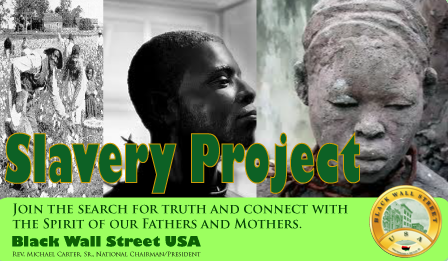
Alabama
Alaska
Arizona
Arkansas
California
Colorado
Connecticut
Delaware
Florida
Georgia
Hawaii
Idaho
Illinois
Indiana
Iowa
Kansas
Kentucky
Louisiana
Maine
Maryland
Massachusetts
Michigan
Minnesota
Mississippi
Missouri
Montana
Nebraska
Nevada
New Hampshire
New Jersey
New Mexico
New York
North Carolina
North Dakota
Ohio
Oklahoma
Oregon
Pennsylvania
Rhode Island
South Carolina
South Dakota
Tennessee
Texas
Utah
Vermont
Virginia
Washington
West Virginia
Wisconsin
Wyoming
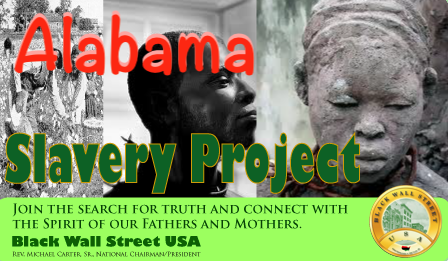
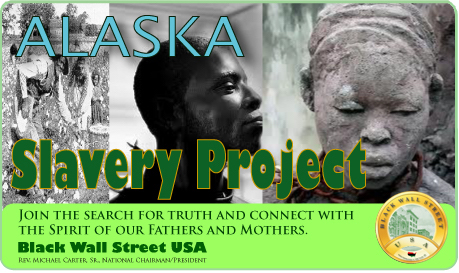



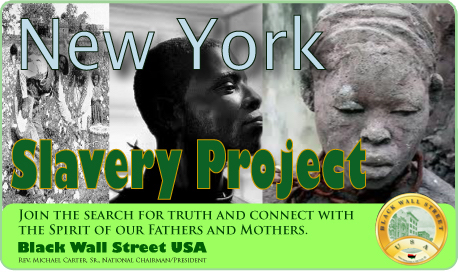

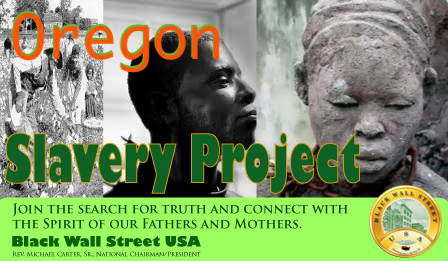
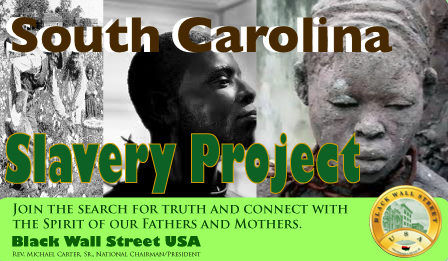
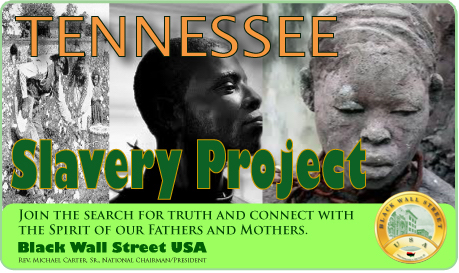
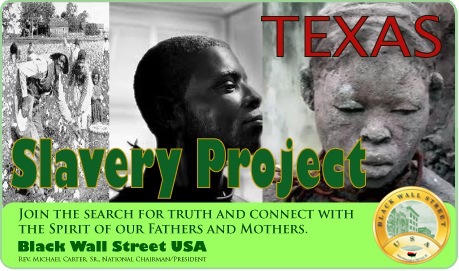



BlackWallStreet.org

Slave Records By State
See: Slave Records By State
Freedmen's Bureau Records
See: Freedmen's Bureau Online
American Slavery Records
See: American Slavery Records
American Slavery: Slave Narratives
See: Slave Narratives
American Slavery: Slave Owners
See: Slave Owners
American Slavery: Slave Records By County
See: Slave Records By County
American Slavery: Underground Railroad
See: American Slavery: Underground Railroad

